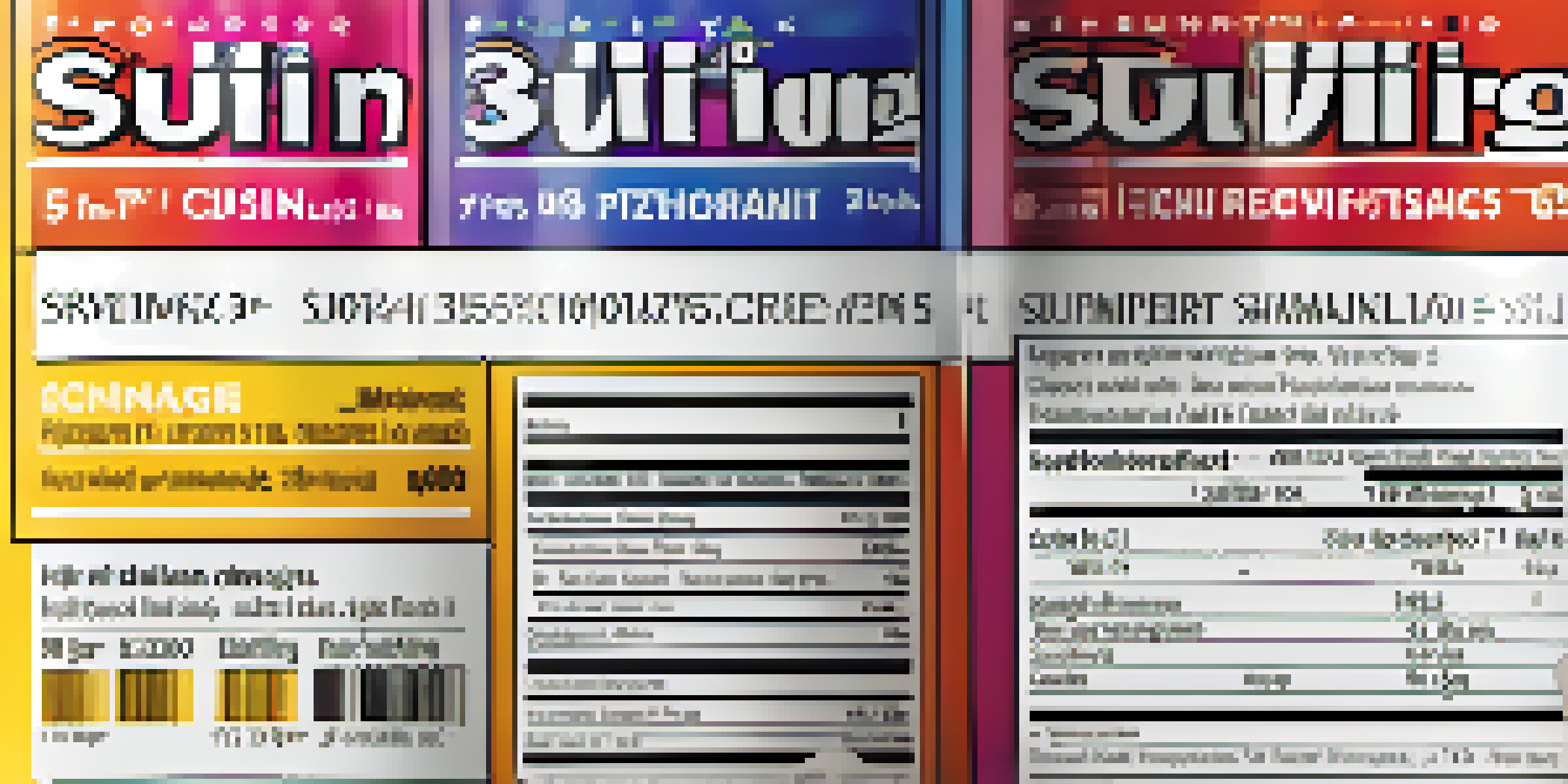How to Read and Understand Supplement Labels

Understanding Supplement Labels: The Basics
Supplement labels can often feel overwhelming, especially with the myriad of terms and numbers. However, understanding these labels is crucial for making informed choices about your health. At their core, supplement labels are designed to provide you with essential information about the product's contents and benefits.
The greatest wealth is health.
Each label provides a breakdown of the ingredients, including active components and any fillers or additives. This transparency allows you to see exactly what you're putting into your body. It’s akin to reading a recipe before cooking; knowing the ingredients helps you understand the dish you’re about to enjoy.
Additionally, supplement labels are regulated by authorities like the FDA, which ensures that the information provided is accurate. While this doesn’t mean every product is perfect, it does offer a layer of trustworthiness. Just remember, knowledge is power, and knowing how to read these labels is your first step.
Decoding the Supplement Facts Panel
The Supplement Facts panel is where the magic happens. This section lists the serving size, servings per container, and the nutrients contained within. Think of it as the nutritional scoreboard for the supplement, helping you gauge its value based on your needs.

The serving size is particularly important, as it indicates how much of the supplement you should take to reap its benefits. For instance, if a pill contains 1000mg of Vitamin C per serving and you take two, you’re getting 2000mg. This clarity helps you avoid overconsumption or underdosing.
Understand Supplement Labels
Grasping supplement labels is essential for making informed health decisions.
Moreover, the nutrients are listed with their daily value percentages, giving you a quick reference for how much of your daily needs the supplement meets. This can be incredibly helpful when trying to balance your diet or fill nutritional gaps. Always keep an eye on these percentages to ensure you’re on the right track.
Identifying Active Ingredients and Their Benefits
Active ingredients are the stars of the supplement show; these are the components that provide health benefits. They can range from vitamins and minerals to herbal extracts and amino acids, each serving a specific purpose in your body. When scanning the label, focus on these active ingredients to understand what the supplement can do for you.
Take care of your body. It's the only place you have to live.
For example, if you see 'Omega-3 Fatty Acids' listed, you can expect benefits related to heart health and inflammation reduction. Understanding the role of each active ingredient helps you align your supplement choice with your health goals, like boosting immunity or enhancing energy levels.
However, it’s essential to research these ingredients, as not all supplements provide the same quality or efficacy. Look for reputable studies or consult a healthcare professional to ensure that the ingredients will benefit you in the way you hope. Knowledge about these active ingredients equips you to make the best decisions for your health.
Recognizing Additives and Fillers: What to Look For
While active ingredients are your primary focus, don’t overlook the additives and fillers included in supplements. These substances can affect the product’s quality and your overall health. Fillers are often used to bulk up a pill, but they may add unnecessary calories or allergens.
Common additives include things like binders, preservatives, and coloring agents. While some may be harmless, others could cause adverse reactions for those with sensitivities. For instance, gluten or artificial colors could be a concern for certain individuals, making it crucial to read the fine print.
Focus on Active Ingredients
Identifying active ingredients helps align supplements with your health goals.
Knowing what these additives are and their potential effects on your body is key to making an informed choice. Always opt for brands that prioritize transparency and quality in their ingredient sourcing. By paying attention to these details, you can ensure you’re choosing supplements that align with your health philosophy.
Checking for Quality Certifications and Testing
Quality certifications are your assurance that a supplement meets specific safety and efficacy standards. Look for seals from organizations like NSF International or ConsumerLab, which conduct independent testing on products. These certifications signify that the supplement has been vetted for quality, potency, and absence of harmful contaminants.
Moreover, some brands may also undergo Good Manufacturing Practices (GMP) audits, which ensure that the product is consistently produced and controlled according to quality standards. Think of this as a stamp of approval, giving you confidence in what you’re buying.
Opting for supplements with these certifications can save you from potential health risks associated with poorly manufactured products. Just like choosing a restaurant with high ratings, selecting certified supplements can lead to better health outcomes. Quality matters, so don’t skip this step in your label-reading journey.
Understanding Dosage Recommendations and Warnings
Dosage recommendations are essential for ensuring you’re using the supplement effectively and safely. Each product will typically offer guidance on how many servings to take daily, tailored to the ingredient's potency and intended use. Following these guidelines is crucial, as exceeding the recommended dosage can lead to adverse effects.
Warnings also play a critical role in your decision-making process. They often highlight potential side effects, interactions with medications, or specific populations that should avoid the supplement altogether. For example, pregnant women may need to steer clear of certain herbal supplements, so it’s vital to read these warnings carefully.
Check Brand Reputation
Researching a brand's reputation ensures you choose quality and trustworthy supplements.
By adhering to dosage recommendations and heeding warnings, you can manage your health proactively. Just like you wouldn't drive a car without knowing the speed limit, using supplements responsibly requires understanding these guidelines. This knowledge empowers you to make choices that support your well-being.
Researching Brands and Their Reputation
In a market flooded with options, brand reputation can significantly influence your supplement choices. Some brands are well-known for their commitment to quality and transparency, while others may cut corners. Before purchasing, take the time to research the brand’s history, values, and customer reviews.
Look for brands that are open about their sourcing and manufacturing processes. They should be willing to share information about their ingredients, testing procedures, and certifications. This openness reflects a commitment to consumer safety and satisfaction, much like a trusted friend recommending a restaurant.

Don’t hesitate to seek out third-party reviews and testimonials as well. Other consumers’ experiences can provide valuable insights into a brand’s effectiveness and reliability. By doing your homework, you can confidently select brands that align with your health goals and values, ensuring a positive supplement experience.